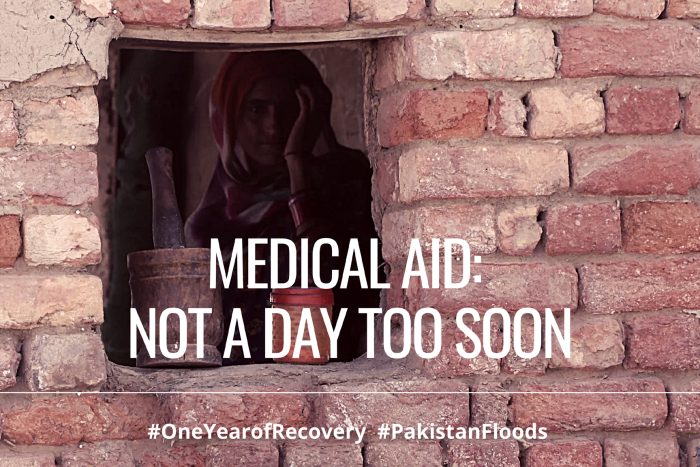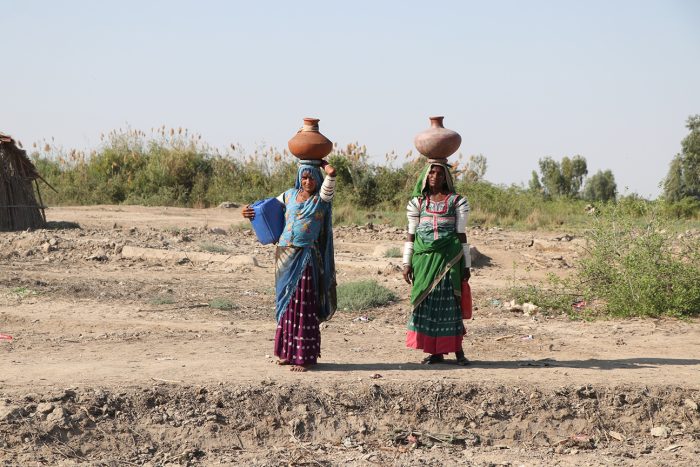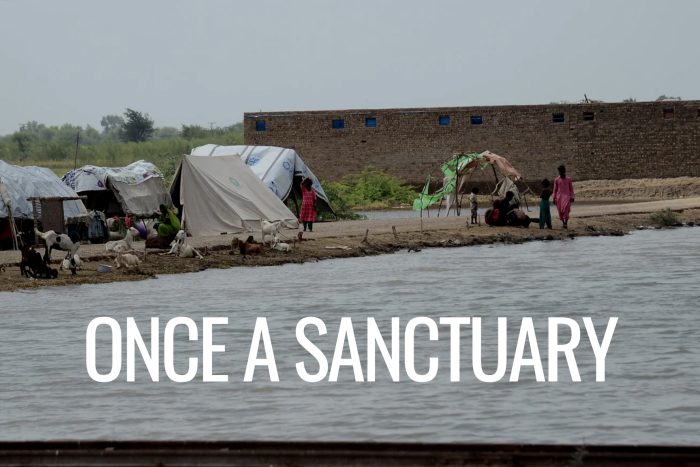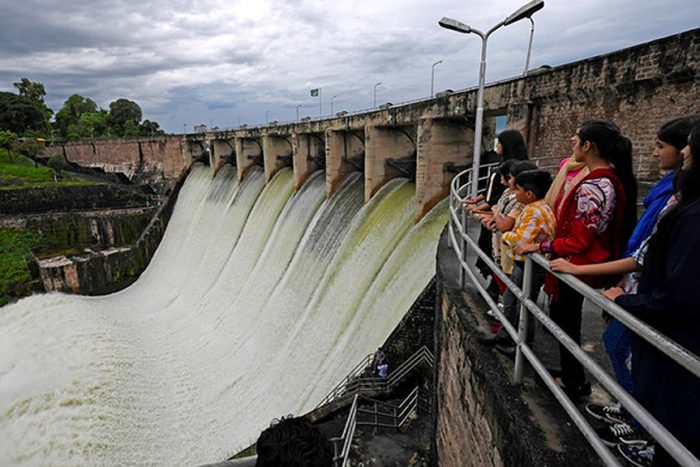Archives
Medical Aid: Not a Day too Soon
Village Dharshi Bhagat lies by the road connecting Samaro town with Samaro Road; the latter being the town’s railhead where the old abandoned metre-gauge railway station still stands for the first two weeks after it started in late July, the rain did not stop for a minute. Thereafter it continued to teem down with brief intervals lasting never more than some minutes until the village went under a metre of water.
Twenty-five-year-old Heeru was only days from delivering her baby when it started. As the water rose, she and some other women made a desperate run to save whatever little cotton they could from the fast drowning field they had so carefully tended the land they worked as labourers. The struggle in mud and water was worth only a few thousand rupees.
With the village going under water, she and her family left their home and the fields and moved to the only stretch of road that was above the dark water. For three months, they lived under a makeshift shelter of bamboo poles holding up plastic sheeting for a roof. It was good fortune that Heeru had salvaged some cotton and there was some cash for food because in the time of the rising waters, she gave birth to her second child, a daughter. When her pains began, her husband hired a motorcycle and ferried Heeru to the Basic Health Unit at Samaro Road where she fortunately got the attention of the doctor and a safe delivery.
Not long after the birth of the child the meagre cash in her kitty ran out and her family subsisted on chilli paste and roti. Their one goat provided a small amount of milk daily. It was a hard life for the family, especially so for the young lactating mother.
Heeru recounted how her firstborn, a son, had died two years ago aged just four months. The child had gone down with fever and convulsions and though the Basic Health Unit at Samaro Road was just 4 km away, the parents were tardy in taking him there. For five days the poor child suffered and when they eventually did get to the BHU, the doctor could do nothing to save the baby.
For some inexplicable reason, seeking medical assistance was simply not a priority for these poor people. They still relied on folk medicine and even considered milk tea some sort of panacea.
Dharshi Bhagat, who gives his name to the village, said Heeru’s husband was lucky to be able to rent a motorcycle because shortly after, the only transport capable of plying on the submerged roads were big four-wheel drive vehicles. An ailing person had to be carried either on a string bed or piggyback all the way to the units either in Samaro or Samaro Road. And this was a time of rampant disease. Fever, skin infections and diarrhoea were raging in the makeshift camp strung out along the road. In that desperate time of zero income, men were seen carrying the ailing to the BHU.
In mid-October, the first Community World Service Asia’s medical mobile unit reached this village. The village was still submerged and the mobile unit had to be parked on the road, the only strip of land free of water. Dharshi Bhagat said this came not a day too soon for who would not have appreciated this gratis service at the doorstep in that time of great adversity.
Lady Health Visitor Farkhanda said the mobile unit had been on the road for ten weeks moving from village to village and treated on average a hundred and fifty patients every day. On the first visit to Dharshi Bhagat, they had a similar number between nine in the morning and three in the afternoon. Referrals of more complicated cases was made to the Samaro town hospital. Common complaints were malaria, water-borne gastro-intestinal, eye and skin infections. This time around, respiratory tract infections had increased and the demand was for ‘pills for strength’, as multivitamin tablets are referred to.
Outside, among the crowd of men waiting to consult the doctor Bhoomo said he felt weak and his ‘liver burned’ and showed a handful of blister-packed multivitamin tablets and an antacid.
“The first time the medical van visited our village, I was suffering from the same, but I had been out cutting mesquite to sell in neighbouring villages and I missed my chance to see the doctor,” said Bhoomo. For him his suffering was secondary. Most essential was for him to make some little cash for food.
Why hadn’t Bhoomo gone to the hospital in town during all this time? “I have no money, the fare out and back is Rs 40, and after I spend a day cutting mesquite, there is only enough cash to purchase food for my family of nine. I cannot afford to go to town.”
On the second visit in mid-November the mobile health unit had in just two hours treated one hundred and thirty patients. And an equal number waited patiently outside. Some like Dheero said they had no complaint and had come only to watch the goings on; most others complained of stomach ache and fever. Nearly all of them had either simply suffered stoically or experimented with folk medication to no effect. The lament was the same all around: they had no money to visit the hospital in town. And they could not afford to take time off from their struggle to earn some money.
Listening to the very vocal Kasturi, suffering in silence seemed to come naturally to them. She had a reasonable income from working as a seamstress while her husband was a door-to-door clothier. Their once comfortable life was now reduced straitened circumstances.
“The crops have all been destroyed. There is no work and therefore no money. Who can order new clothing in these times? The Lord is kind, I took great precautions and my three children did not fall ill, but families with illness could either feed themselves one, or at most two, meals a day. They did not have the means to make frequent trips to the Samaro hospital.”
Dharshi Bhagat was right: the mobile unit had come not a day too soon.
One Year of Recovery: Remembering Flood Survivours & The Road Ahead
A year on, Tooba Siddiqui, highlights how CWSA has worked towards mainstreaming quality, accountability and Safeguarding in flood response activities in Pakistan.
Once A Sanctuary
One Year of Recovery: Remembering Flood Survivours & The Road Ahead
ACT Alliance has been one of CWSA’s key partners in humanitarian response in the region. Their support ensured aid to thousands of flood affected families in Pakistan in 2023. ACT staff was in the field this month to monitor relief and response activities supported by the Appeal with a special message on the first anniversary of the disaster.
One Year of Recovery: Remembering Flood Survivours & The Road Ahead
As we mark the one year anniversary of Pakistan’s devastating Floods of 2022, our Regional Director, highlights how affected populations have survived one of the century’s worst climatic disasters and the needs that still exist.
Beyond Despair: A survivor story
Floods uproot rural communities in Pakistan again
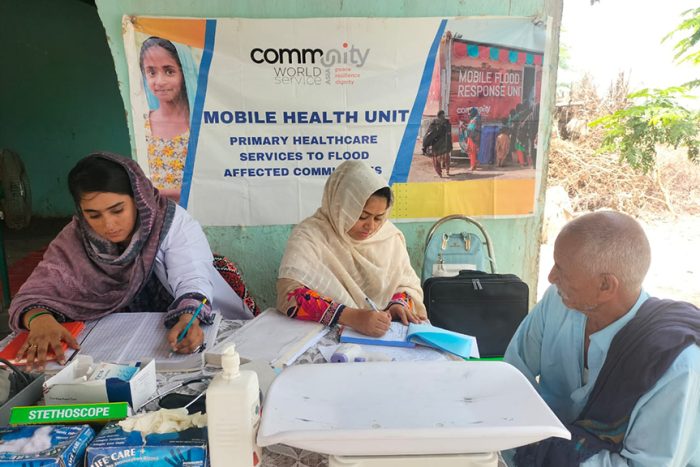
Latest monsoon rains in Pakistan have once again lead to widespread flooding, taking lives, damaging roads, and disrupting the lives of thousands of local communities that were already grappling with recovery from last year’s floods. The 2022 floods had a profound impact on a large population of Pakistan’s mostly rural community, affecting 33 million people across the country and claiming 1,739 lives1.
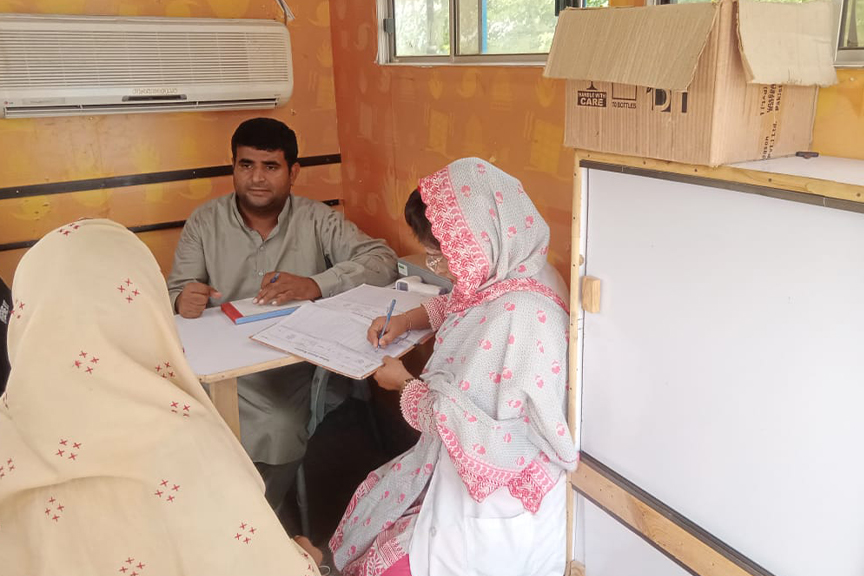
In initial response to the current floods, Community World Service Asia’s emergency team has conducted assessments in twenty-five villages, which were previously affected by last year’s floods, within the Khairpur district. This new wave of floods has again ravaged agricultural lands, livestock, and infrastructure of communities living in Taluka2 Sobhodero and Kingri.
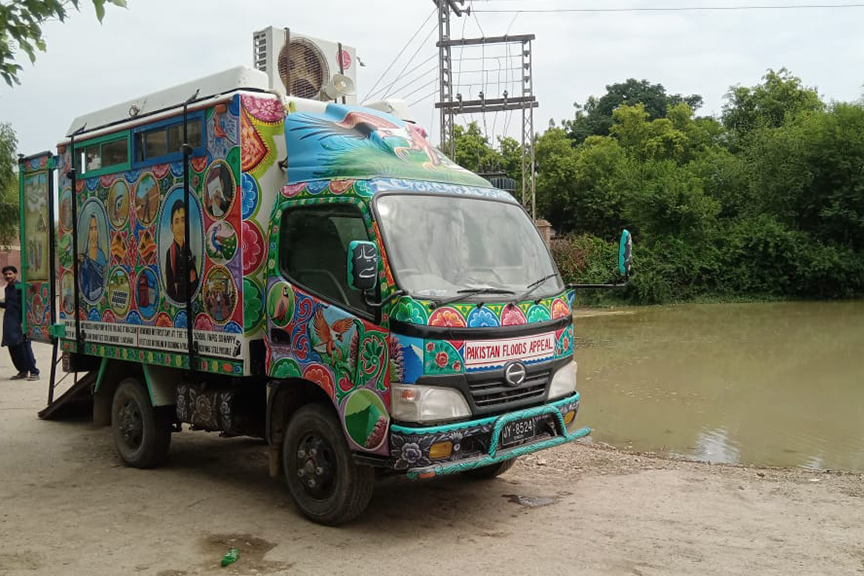
More than 5,600 people and a total of 1,149 households in the two talukas have been severely affected by the latest round of floods. Many affected families have sought refuge on higher grounds. Some women and children have decided to stay in their homes, with the men of the families venturing out in search of daily wages and essential supplies to ensure basic survival at this time of crisis. As connecting roads to this part of the district remain submerged, affected communities have again resorted to using boats to access main roads.

Community World Service Asia, with the support of its partners, has launched immediate humanitarian response activities to support affected communities in Taluka Sobhodero and Kingri. Through our response, we are providing essential health services through mobile health units, offering curative and preventive consultations, outpatient care, antenatal care, postnatal care, health counseling, and health awareness sessions. The awareness sessions focus on preventive diseases, maternal and neonatal healthcare, and hygiene. Affected communities are in urgent need of food, healthcare services, veterinary support for their livestock, and assistance with transportation through boats to meet their survival needs during this crisis.
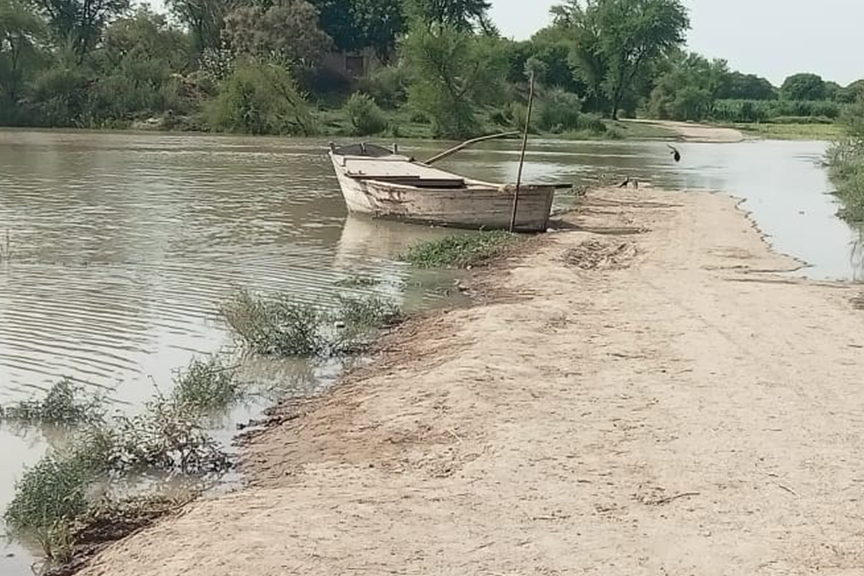
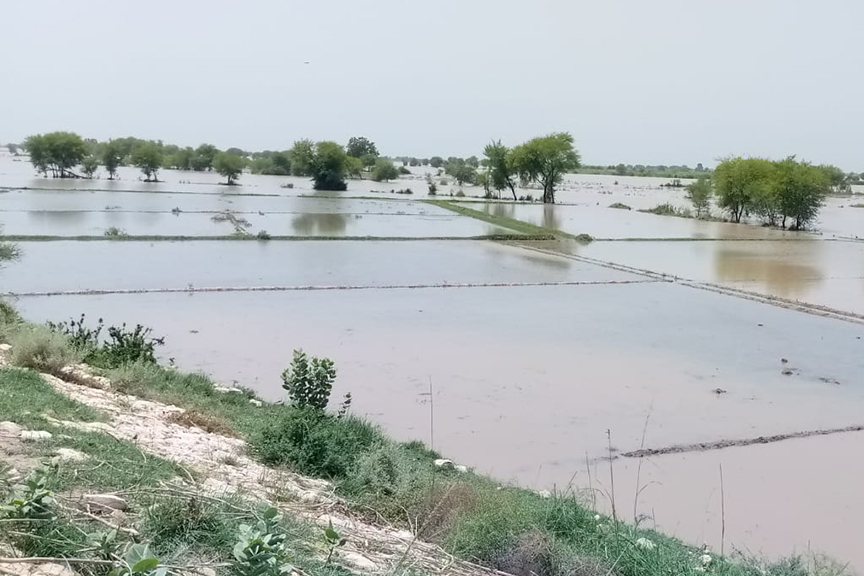
Note: Situation Update 1 on this emergency can be read here.
Contacts:
Shama Mall
Deputy Regional Director
Programs & Organisational Development
Email: shama.mall@communityworldservice.asia
Tele: +92-21-34390541-4
Palwashay Arbab
Head of Communication
Email: palwashay.arbab@communityworldservice.asia
Tele: +92-21-34390541
Sources:
www.ndma.gov.pk
www.arabnews.pk
https://pdma.gos.pk
https://reliefweb.int
www.nation.com.pk
1. National Disaster Management Authority (NDMA)
2. In Pakistan, a tehsil or (taluka) is an administrative sub-division of a District.
Heavy Rainfall triggers flooding in several areas in Sindh
Photo credit: CWSA staff in Khairpur, Sindh
According to the Flood Forecasting Division, the River Indus has experienced high flood levels at Guddu Barrage, with inflow ranging from 4,70,000 to 5,10,000 cusecs. Additionally, at Taunsa and Sukkur barrages1, Indus has been at a medium flood level.
This week’s monsoon rainfall in the upper catchment areas of the river has caused a surge in water levels at Guddu Barrage, with an inflow of 4,81,913 cusecs and an outflow of 4,61,563 cusecs.
In Ghotki2, a breach in the Zameendari Bund at Indus has resulted in the submergence of cotton, sugarcane and other crops and the disruption of land links for over ten villages, as shared by local sources. Another twenty villages in the Katcha area of Dadu district3 have also been flooded, leaving hundreds of acres of crops submerged. The situation has led people to move to safer areas on their own.
The Flood Forecasting Division predicts that River Indus will reach high flood levels at Guddu and Sukkur barrages within the next 12 to 24 hours, attributing the higher flows to rainfall in the river’s upper catchment areas. The upsurge in water level has also caused flooding in the katcha4 area of Pir Jo Goth and Gambat taluka in Khairpur district, leaving over seventy settlements stranded and at risk. Over 700 households of village Pandhi Mallah in district Khairpur have been left flooded after last night’s rains, with its people displaced and relocated to safe grounds, and disconnected from access to roads.
In upstream areas, the Indus River is experiencing low flood levels at Tarbela, Kalabagh, and Chashma, and medium flood levels at Taunsa Barrage.
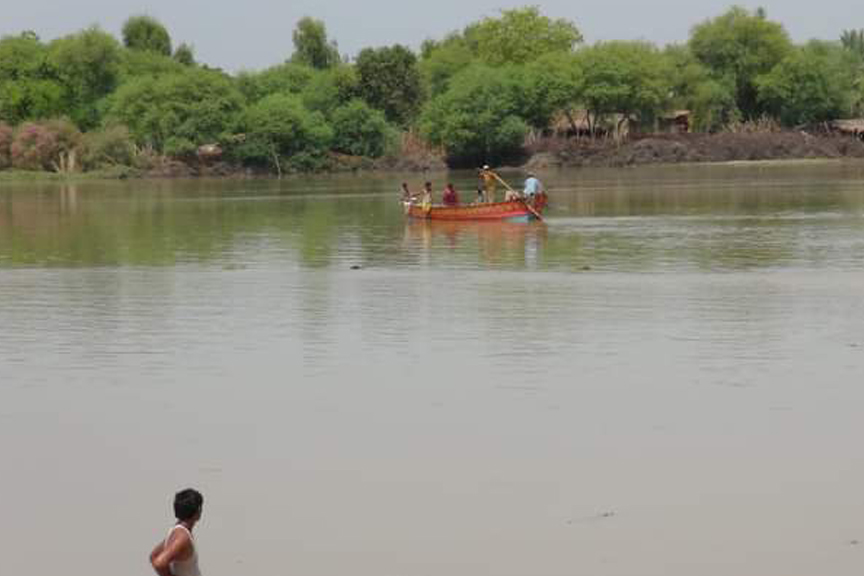

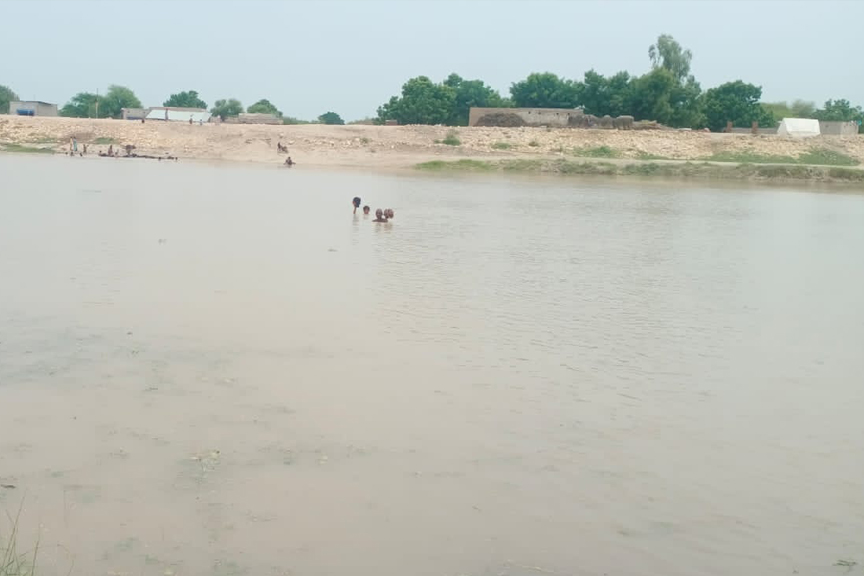
Community World Service Asia Response:
Community World Service Asia’s emergency team is in communication with relevant stakeholders, including local authorities, disaster management agencies, and expected affected communities to ensure effective coordination and a timely response. Our team is on the ground, closely monitoring the situation and will immediately start relief operations when and if required. While focusing on preparedness, CWSA has developed a robust emergency response plan that outlines specific roles, responsibilities, and procedures to ensure a coordinated and efficient flood response.
Contacts:
Shama Mall
Deputy Regional Director
Programs & Organisational Development
Email: shama.mall@communityworldservice.asia
Tele: 92-21-34390541-4
Palwashay Arbab
Head of Communication
Email: palwashay.arbab@communityworldservice.asia
Tele: +92-21-34390541
Sources:
www.ndma.gov.pk
www.arabnews.pk
https://pdma.gos.pk
https://reliefweb.int
www.nation.com.pk
1. Sukkur Barrage is a barrage on the River Indus near the city of Sukkur in the Sindh province of Pakistan. Sukkur Barrage is used to control water flow in the River Indus for the purposes of irrigation and flood control. Head Taunsa Barrage is a barrage on the River Indus in Taunsa district of Dera Ghazi Khan District, Punjab province of Pakistan. And also controls water flow in the River Indus for irrigation and flood control purposes.
2. Ghotki District is a district of the province of Sindh.
3. Also in Sindh
4. Riverine area
Flood Risks High as Water Reservoirs near Maximum Capacity
Photo credit: www.arabnews.com
On Saturday, June 29th, the National Disaster Management Authority (NDMA) warned of expected monsoon rains affecting parts of Pakistan within the next 48 to 72 hours. Meanwhile the Pakistan Meteorological Department (Flood Forecasting Division) reported that the River Indus at Guddu & Sukkur (in Sindh province) are at a medium flood level. Since the onset of monsoon season on June 25th, the death toll from rain-related incidents has reached 173, with casualties including 72 children and 32 women.
According to NDMA’s latest report, recent spells of rains have resulted in the complete destruction of 258 houses and partial damage to 1,227 houses nationwide. In Sindh province, six union councils in Dadu district have been affected by flooding, impacting an estimated 183 villages and 102, 268 individuals. Main roads connecting the district are left submerged in water, leading people to use alternate routes for access1.
Pakistan’s key water reservoirs in Mangla and Tarbela are approaching maximum conservation levels (MCL) amid monsoon rains. Moderate flash floods in River Kabul tributaries and hill torrents in DG Khan are also anticipated, while the NDMA warns of the Sukkur Barrage experiencing high flood levels by July 31st. Moreover, a latest Pakistan Meteorological Department report forecasts a possibility of thunderstorms with lightning and rainfall in Punjab, Khyber Pakhtunkhwa, Gilgit-Baltistan, Islamabad, and Azad Jammu and Kashmir in the coming days.
Last year’s monsoon season left about one-third of the country flooded, claiming nearly 1,700 lives and an estimated damage of over $30 billion.
Community World Service Asia Response:
Community World Service Asia’s emergency team is in communication with relevant stakeholders, including local authorities, disaster management agencies, and expected affected communities to ensure effective coordination and a timely response. Our team is closely monitoring the situation and will immediately start relief operations when and if required. While focusing on preparedness, CWSA has developed a robust emergency response plan that outlines specific roles, responsibilities, and procedures to ensure a coordinated and efficient flood response.
Contacts:
Shama Mall
Deputy Regional Director
Programs & Organizational Development
Email: shama.mall@communityworldservice.asia
Tele: 92-21-34390541-4
Palwashay Arbab
Head of Communication
Email: palwashay.arbab@communityworldservice.asia
Tele: +92-21-34390541
Sources:
www.ndma.gov.pk
www.arabnews.pk
https://pdma.gos.pk
https://reliefweb.int
1 This information was also shared by UNOCHA, Pakistan.





